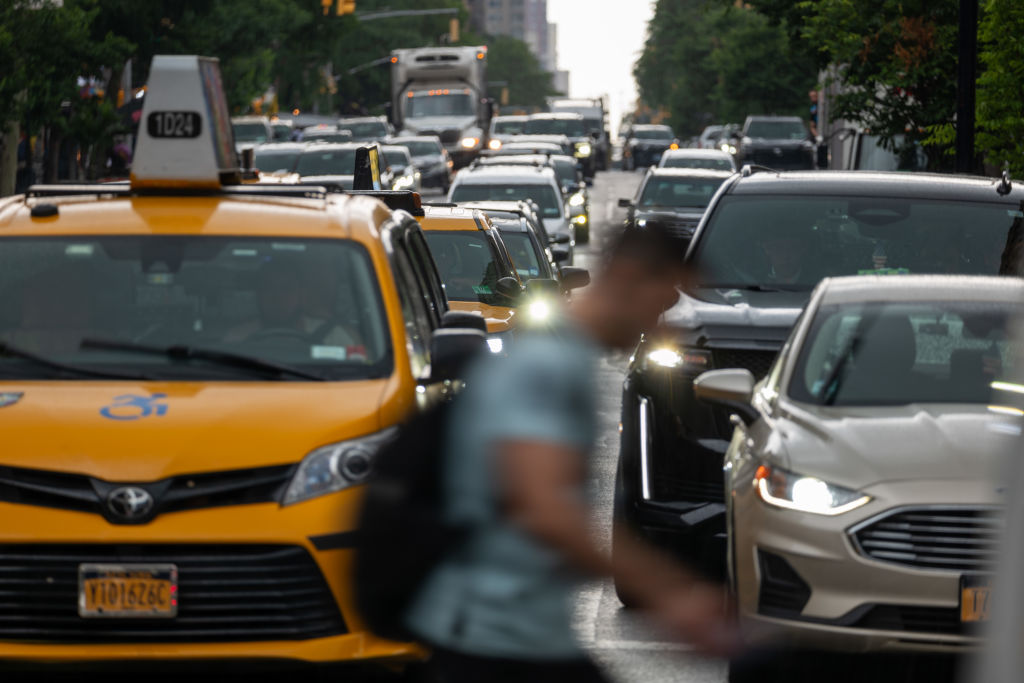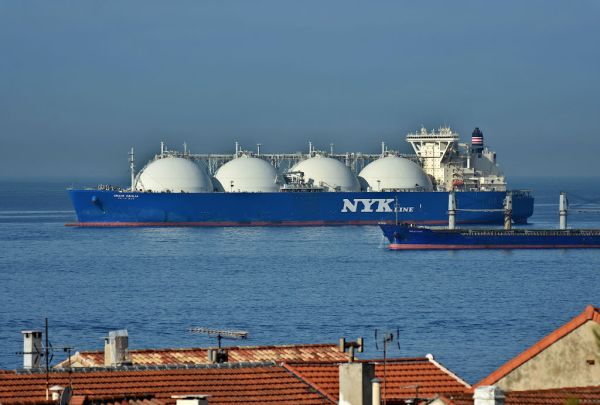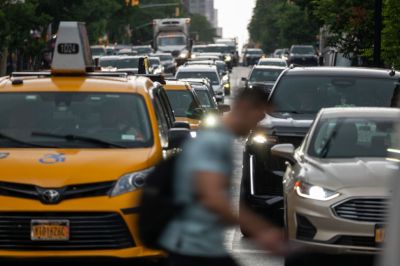The thing about America is, it is full of Americans.
Even in Manhattan, where, in spite of what you might have heard, the local political realities are not so different from what they are in the rest of the country.
New York had a big idea—it was going to impose “congestion pricing,” meaning a $15 daily fee for anybody who wanted to drive a car in Manhattan below 60th Street. Gov. Kathy Hochul, who has the keen understanding of major urban affairs that you can really only get in Greater Buffalo, was talking up the plan only a couple of weeks ago at some globaloney conference in Ireland—and, of course, she has now killed the proposal.
Why? Because New York—and New Jersey, and Connecticut, and neighboring states beyond—are positively full of Americans, and Americans do not want to pay $15 to drive their cars south of the Plaza. (How will they even get to Bergdorf’s? Take the R Train?) Americans do not much want to pay $15 to drive their cars anywhere. Americans are kind of funny that way: Many of them—and I mean the well-off who can afford a few extra bucks and think nothing of paying for such expeditious amenities as TSAPre at the airport or admission to Georgetown—will sit positively boiling in their Audis rather than pay to drive in the express lane. You see it in Dallas, you see it in Washington, you see it in Los Angeles. You saw it at the mere mention of congestion pricing in Manhattan.
Congestion pricing, like higher pay for public-school employees, is the progressives’ Swiss Army knife, and there is nothing—advocates say—it can’t do: It would fund transit, contribute to urban revitalization, increase social justice, mitigate climate change, etc. etc. et a whole lot c. The arguments against it were also perfectly progressive: It would make access to driving into the “red zone” a privilege for the rich, and what about all the impoverished people trying to drive to Rockefeller Center or Dior SoHo? It might even damage New York City’s fragile economy, which is still recovering from endemic misgovernance under progressive ideologues the COVID-19 pandemic.
Hochul says the congestion tax “risks too many unintended consequences,” which, well, bless my little libertarian heart! Now do the minimum wage, the Jones Act, and the Consumer Financial Protection Bureau.
The real problem for Hochul et al. is that the congestion tax would almost certainly work—at least a little bit. Some people would decline to drive into the affected area, and some people would do so and be made to cough up the price of a Hocus Pocus Frappuccino (which is a thing!) at Starbucks, assuming a $1 (we’re talking cheap bastards here) tip. Nobody wants that.
We have been here before. Democrats have been fighting for years to uncap the so-called SALT deduction, the measure that allows taxpayers in high-tax (meaning Democratic) jurisdictions to deduct their state and local taxes from their federal tax obligation. Reinstating the full deduction remains a major goal for Democrats in high-tax progressive states such as New Jersey. Getting rid of the SALT deduction was a good policy—it raised revenue and reduced a fat subsidy for big-spending misgovernance in places such as New Jersey. Getting rid of the SALT cap would add more than $1 trillion to the debt over a decade, more than it will cost to operate the State Department or the Department of the Interior at current spending projections. Some of us are old enough to remember federal anti-deficit measures such as Gramm-Rudman and budget sequestration, which were undone by bipartisan majorities because they worked—i.e., because they actually threatened to force the government to limit spending or raise revenue rather than go deeper into debt. (Sequestration—automatic cuts based on budget goals—is, in theory, still on the books, but Congress simply works around it.) So, none of this is new.
What we have here is a classic public-choice problem: concentrated costs and dispersed benefits, the equally toxic inversion of the more familiar challenge of concentrated benefits and dispersed costs (i.e., Sen. Marco Rubio and his “national security” argument for sugar-industry handouts). There probably would be significant benefits from the congestion fee, although it is worth emphasizing that New York City’s transit problems are not mainly a matter of resource scarcity. (The London Underground costs $9.30 a mile to operate, while it’s $15.10 a mile to operate the New York subways. And if you ever get a chance to compare them—it’s no comparison. Transit authorities have spent $2 billion a mile on the Second Avenue line, spending more money on consultants than on digging the tunnel and laying tracks. New York’s transit construction costs six times what they pay in Paris, which isn’t exactly Swiss in its efficiency.) But the benefits wouldn’t land in anybody’s bank account—not very often or very directly, anyway. Telling the people who run businesses in Midtown that you’re going to tax x to subsidize y which will, someday, produce some vague benefit z on 42nd Street is a hard sell—for a good reason. New Yorkers have heard all that before, as indeed have the good people of Los Angeles and Provo and Muleshoe.
Remember this the next time some nice progressive tells you that we’re going to get to “net zero” with construction, air travel, and electricity generation, and that not only will there be no unpleasant economic trade-offs but the big bold agenda will—all together now!—“pay for itself.”
Even New York Democrats know that kind of thing is nonsense—and sometimes, they will even act on that knowledge, when pressed.







Please note that we at The Dispatch hold ourselves, our work, and our commenters to a higher standard than other places on the internet. We welcome comments that foster genuine debate or discussion—including comments critical of us or our work—but responses that include ad hominem attacks on fellow Dispatch members or are intended to stoke fear and anger may be moderated.
With your membership, you only have the ability to comment on The Morning Dispatch articles. Consider upgrading to join the conversation everywhere.